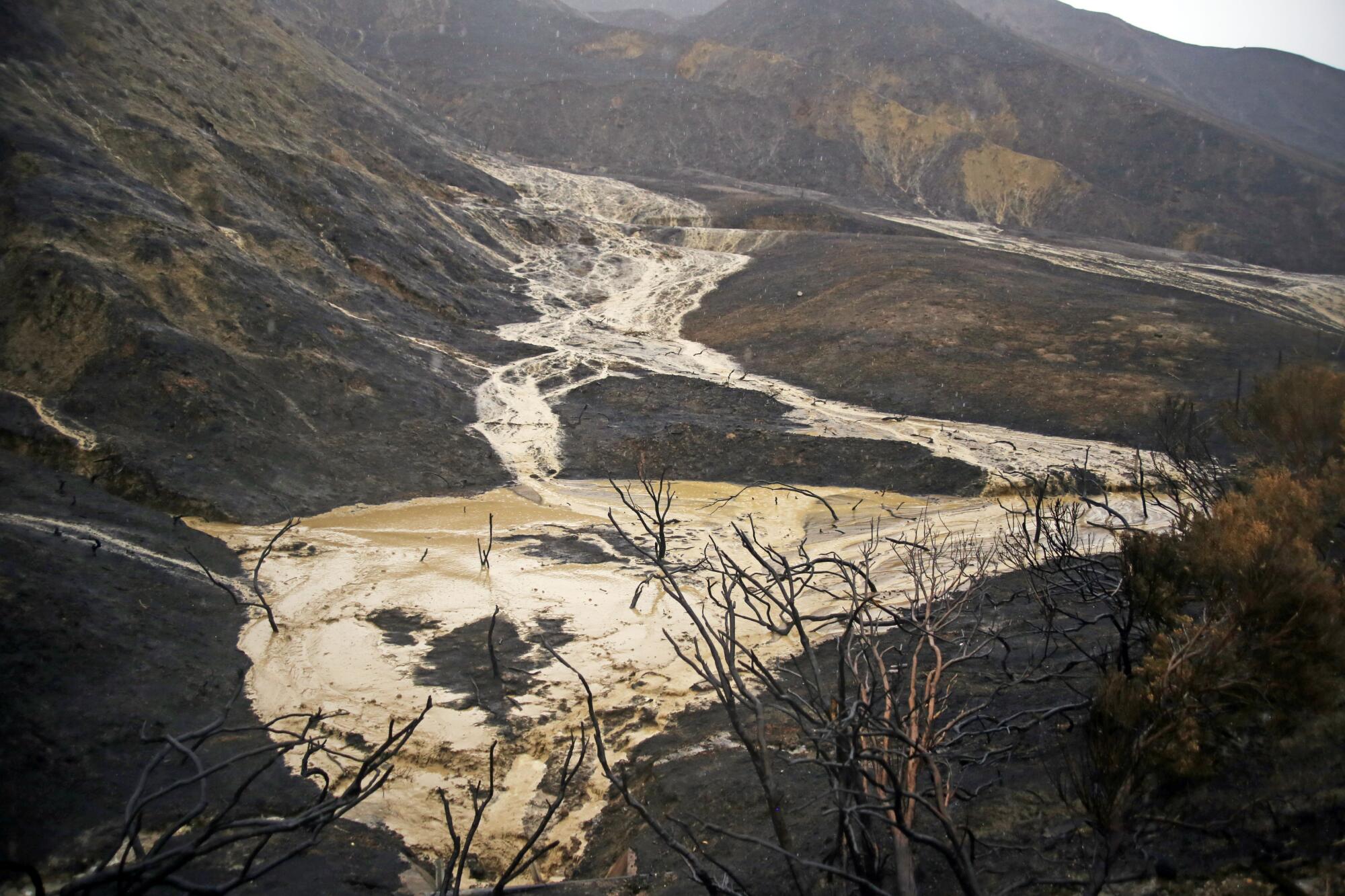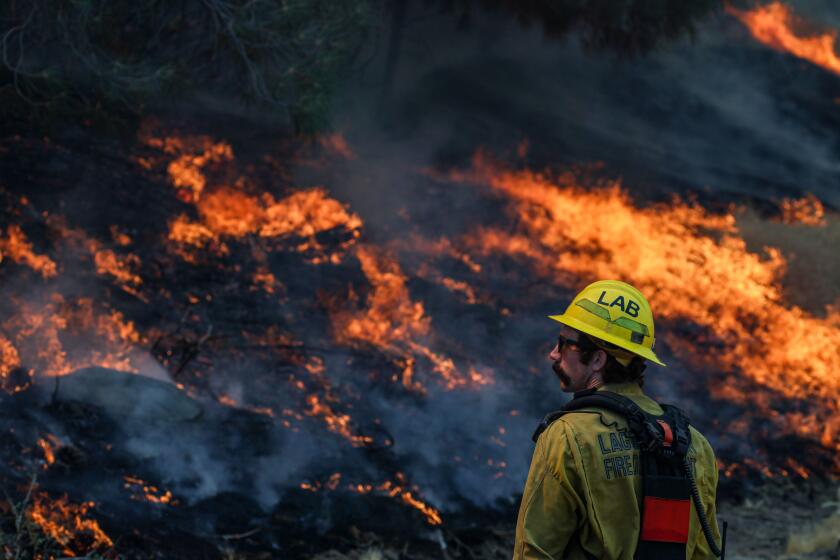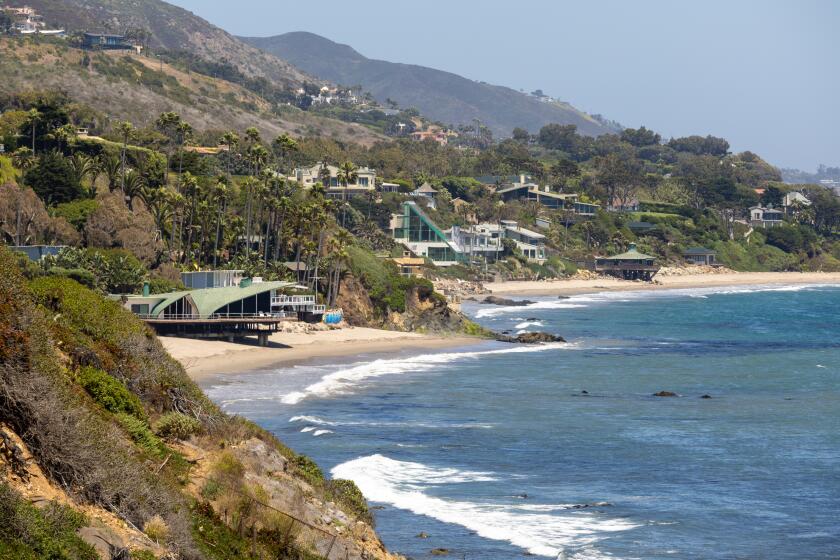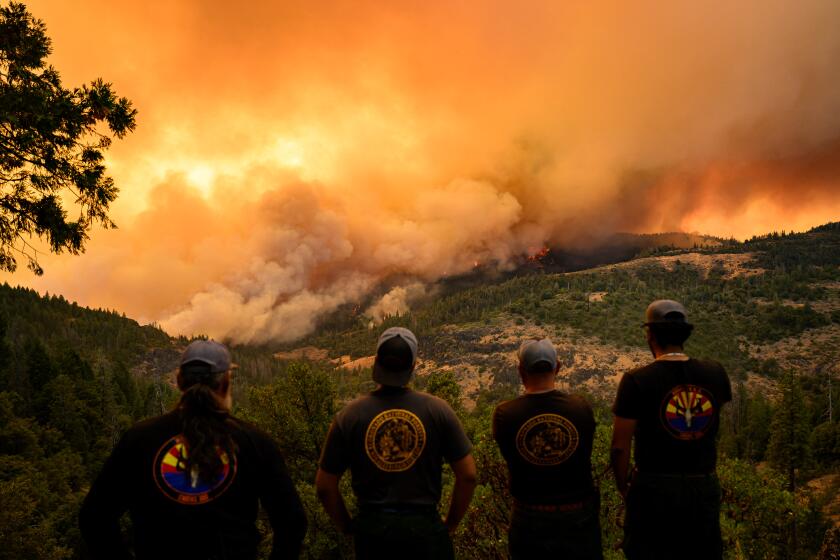
- Share via
Over the last three decades, California has seen increasing erosion after major wildfires — a phenomenon that not only endangers water resources and ecosystems, but is also likely to worsen with climate change, according to researchers.
A new study from the U.S. Geological Survey documented a tenfold increase in post-fire hillside erosion in Northern California from the late 1980s to the 2010s, with the majority of the largest sediment-producing fires occurring in the last decade.
This erosion causes a number of problems. When heavy rains scour charred hillsides, debris flows can choke rivers and streams, depriving fish of oxygen. Sediment runoff can also fill reservoirs and take up valuable water storage space, damage flood control infrastructure and threaten nearby communities vulnerable to flash flooding.
The research team noted that erosion after wildfires has accelerated across the state since 1984, with the northern half of the state recording the most noticeable change.
“In Northern California, we really see this huge increase [in post-fire erosion] from the first decade to the second to the third to the fourth,” said Helen Dow, a research geologist with USGS and the study’s lead author. “There’s just a large rise in sediment, both in mass ... and then also when we look at yield, being the mass per area.”
It’s not even the midpoint of summer in California and wildfires have already scorched more than 751,000 acres, straining firefighting resources, forcing evacuations and destroying homes.
By incorporating detailed modeling and field-based observations, the research team quantified soil and sediment loads from erosion between 1984 to 2021 for every year following a large wildfire, which the scientists classified as larger than 25,000 acres. This method was able to put a figure on an issue that ecologists, forest managers and water conservationists have long wondered about.
“It’s not surprising ... but it’s good to see it quantified by USGS,” said Glen Martin, a spokesperson for the environmental nonprofit California Water Impact Network.
“It points out what the bigger problem is, which is, California — your water supplies, your reservoirs, your fisheries are already on the brink, and these catastrophic fires are going to push it over for a variety of reasons,” said Martin, who was not involved in the research.
Several studies have already shown that wildfires are growing larger and more intense due to climate change. The same forces are also increasing the frequency of more extreme rainstorms across the state, leading to more episodes of “weather whiplash.”
The USGS paper, which was published recently in the Journal of Geophysical Research, found that 57% of the state’s post-fire erosion occurred upstream of reservoirs, “indicating a growing risk to water security.” Reservoirs are a key component of the state’s fragile water system, but the influx of sediment can both decrease a basin’s capacity and degrade its water quality.
“These results indicate increasing pressure on water resources from post-fire erosion with ongoing climate change,” study authors wrote.
Despite a relatively slow real estate market, a new report says billionaires are still buying homes in half-a-dozen markets. Two are in California.
Martin called the rise in erosion part of an “unvirtuous cycle” of more fires, more eroded soil, which leads to more infrastructure failures and, ultimately, less water.
It “has huge consequences for everything from fisheries to water supply, and this study confirms that,” Martin said.
USGS researchers expect that erosion after wildfires will only continue to increase across the state without comprehensive mitigation efforts, but Dow said documenting the extent of the problem is an important step for state and federal officials to look for interventions.
“Knowing this is a problem that’s worsening in Northern California, and having an idea of the size of the problem both in Northern and Southern California, might inform how agencies think about fire,” Dow said.
“What needs to be done is increased fuels control on both public and private lands,” Martin said, “so that when we do get fires, they aren’t absolutely devastating, burning down to mineral earth, turning the landscape into essentially a moonscape.”
Martin said fuel control could include include prescribed burns and mechanical thinning, or the targeted removal of certain trees.
California is already aware of the devastating and widespread effects erosion and debris flows can have following large fires.
In Montecito, heavy rainfall after the 2018 Thomas fire unleashed an avalanche of mud and debris that ravaged the town, killing 23 people and destroying 130 homes.
In 2022, a mass fish die-off occurred in the Klamath River after successive landslides dumped fire-scarred soil and debris into the watershed, dropping dissolved oxygen levels for several hours.
The Park fire is burning along creeks that provide vital spawning habitat for California’s spring-run Chinook salmon. Biologists worry the fire will cause harm.
Sediment buildup has also plagued Devil’s Gate Dam in Pasadena. Excess erosion has also clogged countless culverts, blocked roadways and buried infrastructure, increasing flood and safety concerns.
This year, the Park fire, which burned through Mill and Deer creeks in the Central Valley, has threatened what Martin called some of last strongholds for endangered spring-run chinook salmon. He said heavy rains there could hurt any progress wildlife officials have made to support the fish population.
“Our salmon are already decimated by excessive water diversions; when you add this on top of it, it essentially makes it almost impossible for these runs to come back,” Martin said.
Dow said the team’s research only took into account erosion within the first year after a wildfire, so it probably underestimates the full extent of the problem.
The study was released alongside another USGS study that measured sediment in the Carmel River along California’s Central Coast. It concluded that after wildfires and extreme rain, sediment in the watershed greatly increased compared with long-term averages.
With the state facing an array of other major water issues, combating post-fire erosion through better land conservation and forest management is necessary, Martin said, but not simple.
“That’s going to take time, and it’s more than that: It’s going to take a lot of public will and money,” he said. “It’s a crisis situation. ... It’s only going to get worse until we really get serious about addressing it.”










